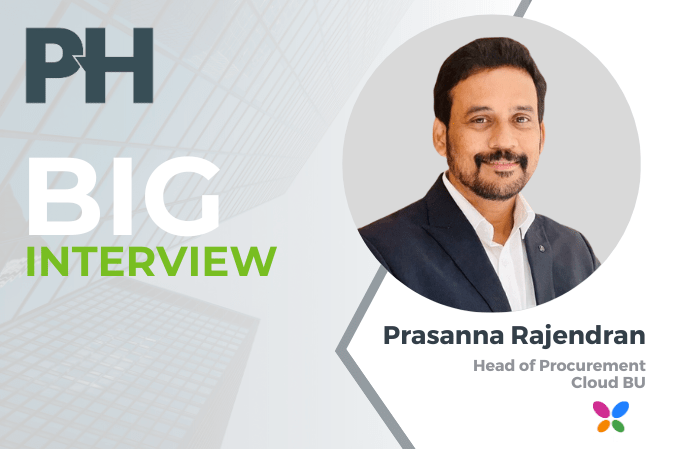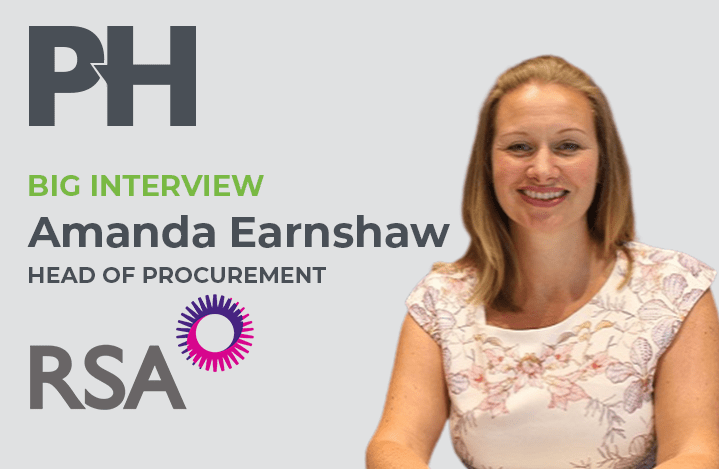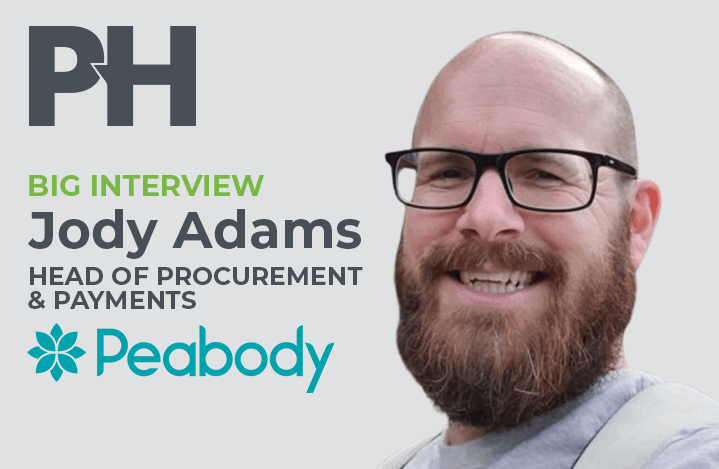Jack Birch, Head of the Interim practice at Procurement Heads explores the flexible and modern solutions shaping the future of Procurement with Prasanna Rajendran, Head of Procurement Cloud BU at Kissflow.
Prasanna, you are the Head of Procurement Cloud BU at Kissflow. Can you tell us about the founding story of Kissflow Procurement Cloud?
It’s a real pleasure to be here today and just to set the context, Kissflow is a low code platform and the Kissflow Procurement Cloud is built on top of that.
As a solution, we have been in the market for close to two decades and have close to 3000 customers in 160+ countries. A couple of years ago we thought about building a solution which is ready to use, and at the same time, customisable according to the business requirements.
So, we started analysing what our customers were doing with the platform and one of the use cases many customers of Kissflow automated was in the procurement space.
We have identified a pattern where our customers were using our platform to automate order management, invoice approval, and receipt processes. Another interesting observation was people have preferred platforms like Kissflow to automate aspects of their procurement processes, instead of going for a point solution, underscoring the need for a specialised solution. Recognising this gap, we have developed the Kissflow Placement Cloud, which could be customised for the customers’ unique needs.
What inspired you to build this product and how does it change the role of a Procurement function?
I started my career as a technical person. I was a developer initially and then later moved into business. I have 22 years of experience in the field of information technology overall.
I generally work closely with large enterprise and mid-market customers providing them solutions to their automation requirements and procurement automation is one area where I have worked a lot. In my experience in most businesses, especially in the mid-market, procurement is either not automated or only partially automated in the ERP.
But if you look at ERP, it is not the right tool for procurement automation. Also, most of the procurement solutions in the market are not designed for the end users, so building an intuitive, and at the same time customisable, procurement solution is the vision for Kissflow. Kissflow Procurement Cloud is one such solution.
It’s very user-friendly and completely customisable. Procurement teams need not change their processes to fit into KPC.
KPC is the short form for Kissflow Procurement Cloud and if you look at KPC today, we help organisations to automate their end-to-end source-to-pay processes and, of course, give them complete control and visibility to improve the overall efficiency of their operations.
In terms of business impact, why do you think that new forms of technology are so important for creating efficiencies in supply chains and Procurement processes?
Technology plays a crucial role in creating efficiency. The potential risks in the supply chain and the business expectations of procurement teams have increased the need for technology and it is very difficult to manage the supply chain or procurement without any automation in place.
Technology is no longer an option, it has become a basic necessity for procurement teams.
So the moment that people adopt the technology, there are developing benefits which include helping to reduce the process times and avoiding human errors, increasing the accuracy and the visibility of the process overall.
There are a bunch of them, but some of the key technologies are in the areas of analytics and collaboration tools as well as artificial intelligence.
Talking about analytics, there are different types, but the key ones are data and predictive analytics. When I say data analytics, these will help organisations to gain valuable insights about their supply chain performance, it will help them to identify the patterns and also help them in making data-driven decisions to optimise the overall processes.
This is something very crucial for any function to work effectively. Productive analysis is part of artificial intelligence, and with the help of machine learning it will start monitoring and analysing all procurement data and will be providing more insights to forecast demand more accurately and optimise inventory levels. This proactive approach helps procurement leaders to reduce lead times and also avoid excess or insufficient inventory levels.
Another interesting technology advancement is in the area of collaboration. Most of the cloud solutions or the procurement platforms that are based on the cloud provide real-time information sharing amongst stakeholders. This has become a very basic automation process today because it’s easy to go and talk to them instead of sending emails back and forth or calling people. They can directly get on to a chat, talk to them and find out what they need to do and then get things done much faster.
The latest addition is artificial intelligence and this has a significant impact on procurement. Some of the areas it can improve are: purchasing bots to simplify requisitions, identifying risks in contracts, and converting purchasing data into real-time spend and supplier insights.
In terms of outlook and predictions, how do you see the procurement landscape evolving over the years to come?
One of the primary objectives of procurement is cost savings. While organisations will continue to emphasise that, the procurement landscape is undergoing a significant transformation.
If you look at factors like globalisation and various crises – like the pandemic, inflation, geopolitical issues – combined with recent emphasis on sustainability and corporate responsibility, these have all changed the worldwide business landscape as a result. The business world is continuing to evolve in response to these dynamic factors. And so the role of procurement within organisations is also equally changing.
In most of our conversations with procurement leaders, we notice that they have shifted their focus to two major areas. One is the ESG – environmental, social and governance, sustainability – and the other area is supplier relationship management. We also observe a notable increase in organisations streamlining their social sustainability goals and supply chain due diligence initiatives. So, these two focuses have become the primary shift in the market.
For example, the recent guidance on third-party relationships from the Federal Bank regulatory agencies in the US and Germany has led to the introduction of a supply chain due diligence act. These are new developments that are influencing organisations to put more emphasis on other aspects rather than just cost savings.
In summary, if you look at the landscape, the roles of procurement teams are evolving more into a strategic function. No longer are they just a support function fulfilling procurements, rather they are now expected to be a true value creator in the business. And here again we see that technology can have a significant impact.
The right technology can help procurement teams to free up their time so that they can focus more on strategic initiatives instead of being bogged down with transactional activities.
Now, how do we get there? The way to do it is to by adopting and embracing digital procurement. In addition to that, we can now empower employees, suppliers and other stakeholders to manage elements of procurement on their own without having to depend on procurement teams. This is what we refer to as the procurement for everyone.
Can you elaborate on what procurement for everyone means?
Procurement for everyone is about giving autonomy to employees, suppliers and other stakeholders to manage procurement on their own without having to depend solely on their procurement teams. Traditionally if you look at procurement teams, they’re doing the procurement because they have the knowledge required to get procurement right, including establishing the right suppliers, writing the contracts and negotiating the pricing.
But with new generations entering the workforce, they’re used to buying things on their own through e-commerce sites. They crave a similar experience in the workplace as well. For example, if they need anything related to MRO (Materials, Repairs, and Operations) – rather than going through the traditional route of emails or individual tickets, they prefer a simple and independent process where they can go, browse, and purchase from a pre-approved list. This led us to conceptualise ‘procurement for everyone,’ where users can effortlessly purchase pre-approved and pre-contracted items on their own without full dependency on their procurement team.
This approach not only caters to the evolving preferences of modern users, but also frees up the time and resources of the procurement team. In a dynamic procurement landscape, this allows the team to shift their focus towards strategic initiatives such as sustainability goals and addressing supply chain resilience challenges. ‘Procurement for everyone’ not only simplifies processes but also positions procurement teams as enablers among stakeholders.
How do you plan to make procurement more accessible to a broader audience or user base?
Traditionally procurement was done only by the procurement team because of the skill set needed. One reason why procurement can feel rather closed off to a broader user base is procurement’s fear of losing control. Visibility and control are an important factor for procurement teams. Another common concern is that systems used to automate procurement are often not so intuitive for the end users. Many organisations use ERPs which are not built for end users and also it’s very expensive to buy licenses for all the employees.
These are some of the factors which influenced us to make our solution more intuitive. KPC is built with the end users in mind, and not just one type of user, but multiple personas involved.
And we want to reduce the overall clicks, making it a much more intelligent interface where people can enable procurement for everyone.
At the same time, we’ll also give complete control to the procurement team. The procurement team will decide what items the end user can go and initiate a request for and they’ll also have a set of pre-boarded, pre-qualified and onboarded suppliers so that they can only buy from those suppliers. All these things are set by the procurement team in advance.
This is the benefit of both – keeping control with the procurement team, whilst at the same time making it much more accessible, intuitive and user-friendly for end users.
Are there specific industries or sectors that you believe will benefit the most from this shift towards inclusive procurement?
I think the Tech industries will top the list always. In addition to that, we’ve also noticed real demand within Banking and Financial Services, as well as those in the Telecoms industries. They might start adopting changes because they typically have a tech-savvy workforce who are interested in and comfortable with the latest technology.
But there should be real growth and wider adoption of technologies across all industry sectors. There are many where the primary spend areas are in the Directs categories, which typically translate very well in terms of the value of our procurement for everyone approach.
What challenges might you anticipate in making procurement more accessible?
Due to exposing procurement to everyone in the business, it should be intuitive and the user experience should be great. In addition, the right intelligence is a key aspect to this. We need to provide all the guidance needed for the user to complete a request on their own.
Without getting these two things right, it will become a problem.
We have to make it accessible. In designing the application and in keeping the end users’ different personas in mind, we make sure to provide all the intelligence needed to complete procurement activities, reducing the dependency on the procurement teams.
As a company that operates internationally, do you see a lot of diversity in the challenges and approaches that different businesses take? Are there common themes which are applicable across the board?
Operating as an international company often brings about a range of challenges and requires diverse approaches. Challenges and approaches vary based on the markets we work in. For example, the challenges and approaches we have to deal with in the mid market are totally different from those of the enterprise market or the regional market.
Some of the common themes we generally have to face relate to cultural differences. Understanding and navigating the diverse cultural landscape is essential.
Another theme is different regulatory compliances. Adhering to different legal and regulatory frameworks in each and every country is a common challenge when building a global solution.
Another variable area is in market dynamics, because markets vary in terms of maturity, consumer behaviour and the computation is again different. Tailoring the product in order to meet marketing strategies and to fit a local market is essential to make the application successful.
In terms of Kissflow and your vision, what would you say sets Kissflow Procurement Cloud apart from other players in the procurement space?
When we started Kissflow Procurement Cloud three years ago the vision was to become one of the top players in the mid-market and enterprise segment. Initially we had a dream to go and compete with the big players in the market and today that is the reality.
The uniqueness about Kissflow Procurement Cloud, it that it’s built on a low-code platform which means it provides complete customisation. This is not the case with other typical procurement solutions, because they are typically built on a programming language meaning they have very limited customisation. Since KPC is built differently, it can provide complete customisation and extensibility is possible once they automate and adopt procurement solutions. Customers can also extend the platform to automate other use cases in other functions.
Finally, if you could give just one piece of advice to procurement leaders, what would it be?
I would recommend they embrace the ‘procurement for everyone’ philosophy. If they can adopt that, this will definitely reduce the transactional workload of their teams so that they can truly focus on their value-add strategic initiatives.
Embracing, building and automating procurement solutions and allowing employees to do some procurement on their own will add a lot of value to the business.






